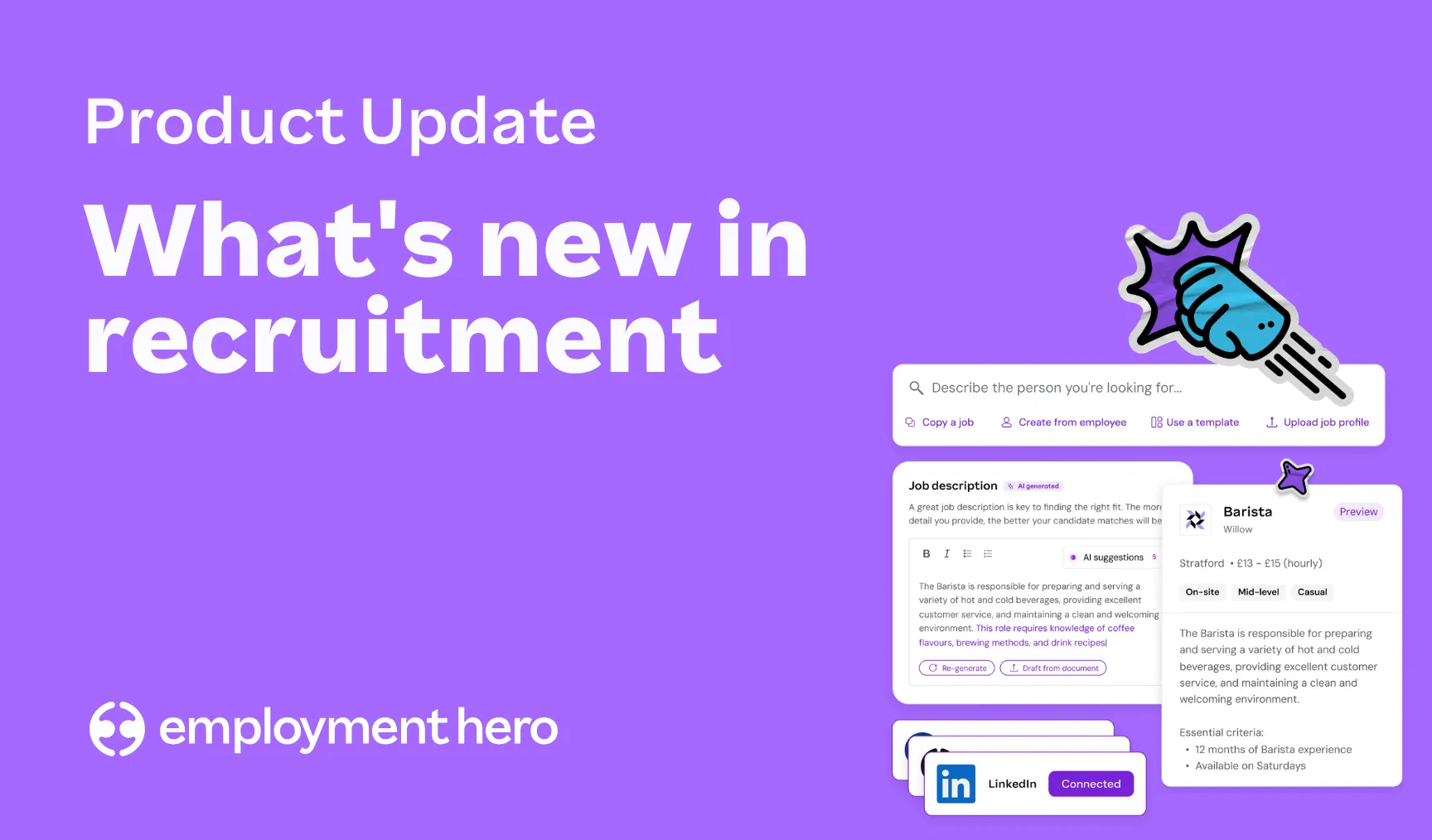The history of performance management
Performance management is definitely not a new concept. Discover the way companies conduct appraisals and how performance management has changed as we delve into the history of performance management.

Find out how performance management has been conducted over the last 100 years and why it’s necessary for businesses to maintain an organised, efficient workforce.
Where did the performance management system begin?
Now we’ve done some digging into the history of performance management, and according to some historians, it is believed there have been records of a performance management system as early as 221 AD. This is seen in how Wei Dynasty emperors used to rate their family members’ performance in everyday life.
But what’s that got to do with business? In the workplace, performance management reviews can be traced back to the 1800s.
The first appraisal system
Several sources have indicated that performance appraisals originated in the early 19th century and took the form of a colour display that rated employee performance created by Robert Owen in his textile mill.
How did performance appraisal systems develop over the years?
Mid-1950s; Formal performance appraisals are much more commonly known around the world, with companies using personality-based systems for measuring employee performance.
It’s the 1960s; there’s a much greater focus on self-appraisal, and most performance appraisal systems are geared more toward looking at what an individual might be able to achieve in the future at a company as opposed to how competent their personalities appeared to be at the time of being assessed. Things are beginning to evolve!
The 1970s; there was a lot of criticism about how the appraisal process was being conducted, and several cases have even been taken to court. A lot of this is down to how subjective and opinion-based most appraisal systems were, and so as the 1970s progressed, companies started to include a lot more psychometrics and rating scales.
Over the next 20 years; there’s been an increase in companies focusing on employee motivation and engagement, which led to a more holistic approach to performance management and appraisals.
Companies have now started measuring against brand-new metrics as part of their appraisal process. Soft-skill metrics such as self-awareness, communication, teamwork
Where does that leave us in the modern-day?
In recent years, performance management has evolved even further, with many companies pulling down the traditional hierarchy in favour of more equal working environments.
This has led to an increase in performance management systems that seek multiple feedback sources when assessing an employee’s performance – this is known as 360-degree feedback.
With mobile technology giving us more flexibility, and more companies recognising the value of great company culture, we believe that the definition of what good performance is will continue to shift.
People who drive an organisation will continue to have even greater input into how their peers are assessed.
Why are performance management systems important for business?
So what can we learn from the history of performance management? Effective performance management is essential to any and all businesses. Both formal and informal management processes help your business align employees, resources, and systems to meet strategic objectives.
As the iconic Henry Ford once said, “Coming together is a beginning; keeping together is progress; working together is success.”
Getting your whole company pulling in the same direction and having employees working to the best of their abilities will make your business’s success skyrocket.
Performance reviews, appraisals and assessments are just one piece of the talent management puzzle. In order to build an empowered and skilful workforce, companies need to do more than audit employee achievements.
Businesses should work towards a management cycle where judgement isn’t the sole focus, but rather ongoing support and improvement is.
What does a good performance management process look like?
Performance management is a series of ongoing events that include the following processes and benefits:
1. Goal setting and revising
Every employee needs a clear understanding of the expectations for their role. They also need context, which includes an understanding of where they fit into the company and how they contribute to the overall success of the business.
This starts with the company and executive goal setting, which cascades into the manager, team, and individual goal setting. Aligning your entire workforce with higher arching business goals sets clear priorities and direction, which ensures individuals can feel ownership in the business through individual objectives.
At Employment Hero, we use the OKRs framework.
2. Management and coaching
Though some goals may need adjusting, at other times employees may not have the skills to reach them. Performance appraisals can be used to identify gaps in employee skill sets.
Improved employee performance and engagement are a result of consistent feedback and employee coaching. It’s common to hire for potential and not experience, so providing the proper training and development plans that address performance and skill gaps is necessary.
Read more: How to create mentorship programs in the workplace
3. Rewards and recognition
Recognition helps employees receive a balance of positive to negative feedback. A little unexpected appreciation can go a long way. It satisfies our fundamental need for praise, reinforces the right behaviours and culture and leverages social engagement.
Rewards and recognition can improve employee retention and engagement, which creates ambassadors for your business and its culture.
4. Ongoing performance planning
Performance management doesn’t end once a performance appraisal is delivered. Managers should take an integrated approach to employee learning.
This means creating employee coaching plans that support an employee’s goals, career interests, and potential, as well as the organisation’s business and talent needs.
Evaluation is only effective when used as a tool for growth and success.
Employment Hero: The modern-day performance management solution
The history of performance management is long and continues to evolve as new ways of doing it emerge. Employment Hero is the world’s first employment OS to simplify performance management.
One thing’s for sure, ongoing performance management will help your business produce:
- Increased focus on driving business results. Since all goals are aligned, an employee’s day-to-day work supports the company’s mission. This promotes a year-round focus on key business results and driving profitability.
- An empowered and engaged workforce. Companies can deepen employee engagement by creating a culture of shared accountability for career growth and development.
- Foundational knowledge of talent. With insight into your workforce’s skills and abilities, you can ensure all employees are getting the direction, feedback, and development they need to succeed. You can identify high and low performers and track and evaluate the effectiveness of employee development activities.
Did you know Employment Hero has its own performance management system that streamlines measuring performance with automated performance reports?
Related Resources
-
 Read more: How to ace AI virtual interviews with Employment Hero’s Recruitment Agent
Read more: How to ace AI virtual interviews with Employment Hero’s Recruitment AgentHow to ace AI virtual interviews with Employment Hero’s Recruitment Agent
Nervous about an AI interview? Get practical tips on how to prepare, from tech setup to answering motivational and behavioural…
-
 Read more: How to ace AI virtual interviews with Employment Hero’s Recruitment Agent
Read more: How to ace AI virtual interviews with Employment Hero’s Recruitment AgentHow to ace AI virtual interviews with Employment Hero’s Recruitment Agent
Nervous about an AI interview? Get practical tips on how to prepare, from tech setup to answering motivational and behavioural…
-
 Read more: What’s new in recruitment at Employment Hero
Read more: What’s new in recruitment at Employment HeroWhat’s new in recruitment at Employment Hero
Discover the latest updates to the Employment Hero ATS, including Indeed integration and simplified job creation, designed to streamline your…





















